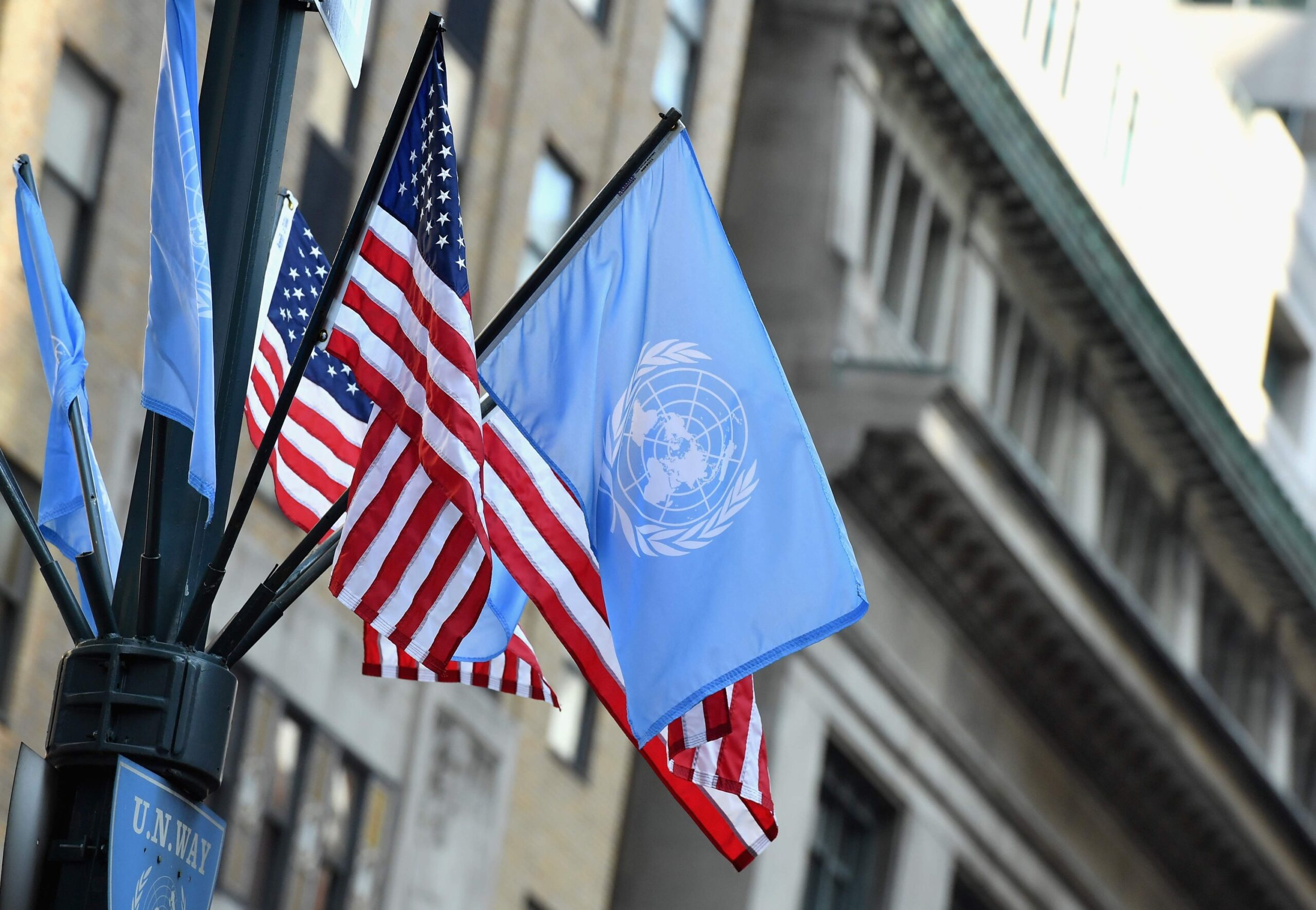UNA-USA Case Competition Winners: Solutions to the Water Crisis
In 2019, UNA-USA encouraged campus chapters across the country to host a case competition on their campus focused on SDG 6: Clean Water and Sanitation.
Since the launch of the campus case competition, UNA-USA campus chapter leaders have been working to raise awareness of the issue and make a difference in their community. Maribel Alfaro, President of the UNA-University of Idaho Chapter, stated, “The water crisis is a global issue and we all need to take part in the solution. Due to environmental problems such as pollution, climate change, overpopulation and misuse of resources; many places on the planet are been left without water which is such a fundamental resource for life. By presenting our cases studies we are putting together our efforts into solving this problem and try to ensure a future where every person have access to clean water.” In addition hosting local case competitions at their universities, UNA-USA students also advocated to Congress to help secure clean water for all.
Three top schools from the UNA-USA campus network participated in the final national round of presentations: California State University-Fullerton, University of Idaho, and University of North Carolina-Chapel Hill. Below is a summary of the solutions they came up with to advance progress towards SDG 6.
California State University-Fullerton: Integrated Water Resource Management in the Middle East (National Winner)
As a chapter, we teamed up to find out more about Sustainable Development Goal 6, clean water and sanitation. Our focus was on subset SDG 6.5, which focuses on Integrated Water Resource Management (IWRM). We reviewed potential issues and solutions in completely different regions around the globe that were being severely impacted by the global water crisis. The region we chose was the Middle East because our case study was in Al Najif, Iraq by Hayder Kareem of Cardiff University. He researched sustainable groundwater management, and thus we sought to apply the IWRM framework as a foundation in the case competition. We included the policy suggestion of managing groundwater wells as an alternative to surface river water in our case study. Overall, we took a holistic approach to water scarcity in the Middle East region that utilizes available resources and includes sustainable solutions for future use. The framework has to address multiple challenges needed in order to be a successful policy and sustainable approach.
Through our participation in the case competition, we learned about the several implications and impact the global water crisis has can be applied to different regions around the globe. We learned that the development and enforcement of legislation that addresses water resource management can be the driving factor in successfully implementing IWRM. We learned the value about community engagement and fostering a discussion on global issues. Aside from what we learned by conducting our own research, we received valuable constructive feedback on our presentation from California Assemblyman Phillip Chen, who served as a judge for the competition. He highlighted the importance of integrating public policy governance, identifying direct and indirect stakeholders to ensure long-term viability and effectiveness of our solution. Another one of our local judges, CSUF Professor Dr. Gedalanga, also provided constructive feedback on the global water crisis and highlighted the importance of clean water to healthy communities. Personally, we took away the lesson that if we as students dare to believe we can shape the future, we only have to work to achieve it.
University of Idaho: Addressing Economic Water Scarcity in Rural India Through Aqua-Pay (National Winner)
The University of Idaho team included the following participants: Koroles Awad (Egypt), Kelton Hunter (US), Evelyn Lemgo (Ghana), and Roshan Puri (Nepal). Our common goal was to come up with an idea which could be applied to resolve a real-world problem. Having an academic background in the field of applied economics, it was important for us to think about the solution that is economically feasible and environmentally sustainable. We chose rural India as a region for our case study and started analyzing the reasons behind the economic scarcity of water. We found three major problems: cost, unaccountability, and self-unsustainability. To account, we proposed different solutions but could not think of the better one than Aqua-pay – thanks to Dr. Alexander Maas for assisting in developing this idea.
Aqua-pay – a concept like eWaterPay – is solar-powered, decentralized, pay on-demand water tap system. Water taps are connected to the internet and are equipped with small, and inexpensive, Near-field communication (NFS) reader, which are used to process individual purchases. This chip can be charged through smartphones, regular cell phones, internet, or through local shopkeepers who accept cash for recharges. Payments and withdrawals are all connected to the same system, where data of the amount withdrawn, revenues collected, and repair expenses are stored and shared. This system addresses the causes of economic water scarcity in the following ways: first, the taps are relatively cheaper to install; second, each small community will be able to decide for repairs and expansions for the system as they see fit, using the collected revenue which along with the repair, and other costs are shared with the users, increasing the accountability; and third, the revenues collected are used to sustain, expand and improve the system, making it self-sustainable.
The whole experience gave us a more complex understanding of water scarcity and related causes. Work on this project also helped us develop our communication in different media such as live presentations and recorded videos. Finally, our proposed solutions may be attractive for other communities struggling with similar problems related to water scarcity and improper water infrastructure e.g. in the Middle East, Africa or parts of Central and South America.
University of North Carolina-Chapel Hill: Saving a Sinking City (National Runner-up)
In March of 2019, the idea of competing in the UNA-USA Case Competition-The Water Crisis was first proposed by our professor of Economic Development. After hearing this great opportunity, our team knew we wanted to compete, it was just a matter of finding the right crisis to solve. In trying to gain a more broad understanding of the water crisis as a whole, our team watched the Netflix series “Explained,” in which there is an episode solely dedicated to the world’s water crisis. In watching this show, Mexico City quickly caught our entire team’s attention for one crucial detail- Mexico City’s water crisis was directly causing the city to sink. Originally a natural lake basin, Mexico City rests primarily on clay with underground aquifers lying beneath. However, as Mexico City relies more heavily on these underground aquifers, the clay begins to dry and crack, causing the city itself to sink. Therefore, our team determined that Mexico City was an ideal case as it demonstrated the severe negative externalities associated with the water crisis. In creating a solution to Mexico City’s water crisis, our team had two main goals: 1) reduce the use of the underground aquifers and 2) increase the value of water. For reducing the use of underground aquifers, our team came up with a simple idea- look up instead of down. In harvesting rainfall, Mexico City would no longer rely so heavily on underground aquifers while maintaining access to a virtually free and unlimited water source. In increasing the value of water, our team decided to implement a water tax. While it may seem harsh, in implementing a water tax, our team hopes that adding a monetary value to this falsely assumed endless resource will increase its overall value, leading to stronger economic decisions around the usage of water. All in all, through participating in this case competition, our team learned about the specificity of each crisis occurring throughout the world. In researching these distinct issues, will be able to provide precise solutions in order to aid the multiple variations of the water crisis facing the world.




